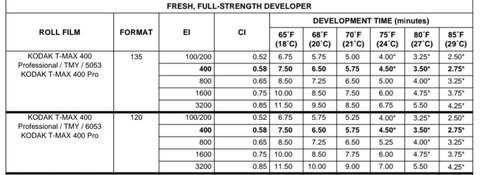danmc
Member
Hi All, First time posting to this forum, so I'm hoping I'm asking this in the right place. Let me know if not. I've been taking a deep dive in understanding the nuances of development with XTOL and T-Max 400. One thing I cannot understand from the XTOL data sheet is that they show contrast index increasing for push processing of 1 stop without an increase in development time. This does not agree with my experience or understanding of development. How can the contrast increase if the development time, temperature and agitations are the same? Is this a mistake in the datasheet or am I missing something? Just reducing exposure should not increase contrast index I wouldn't think. Thanks in advance for any insights.







